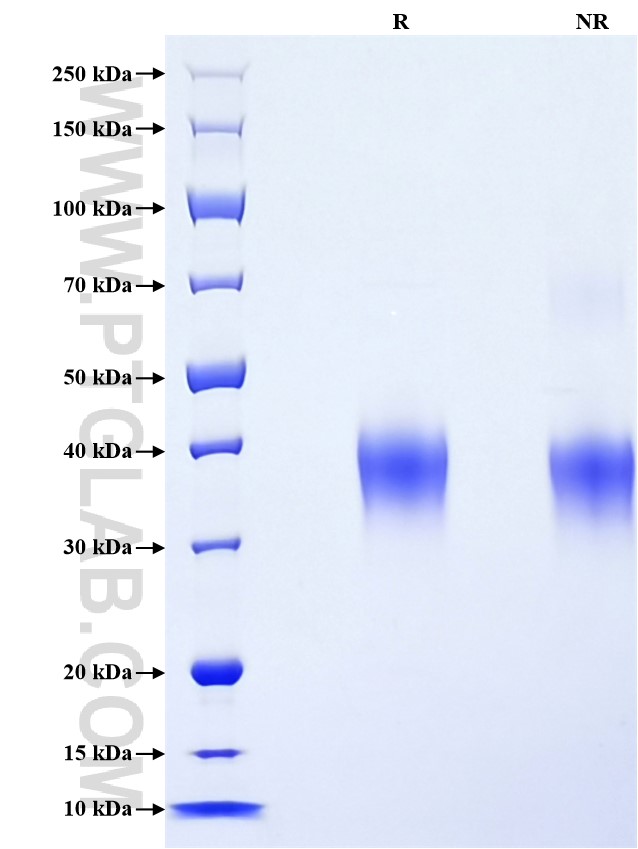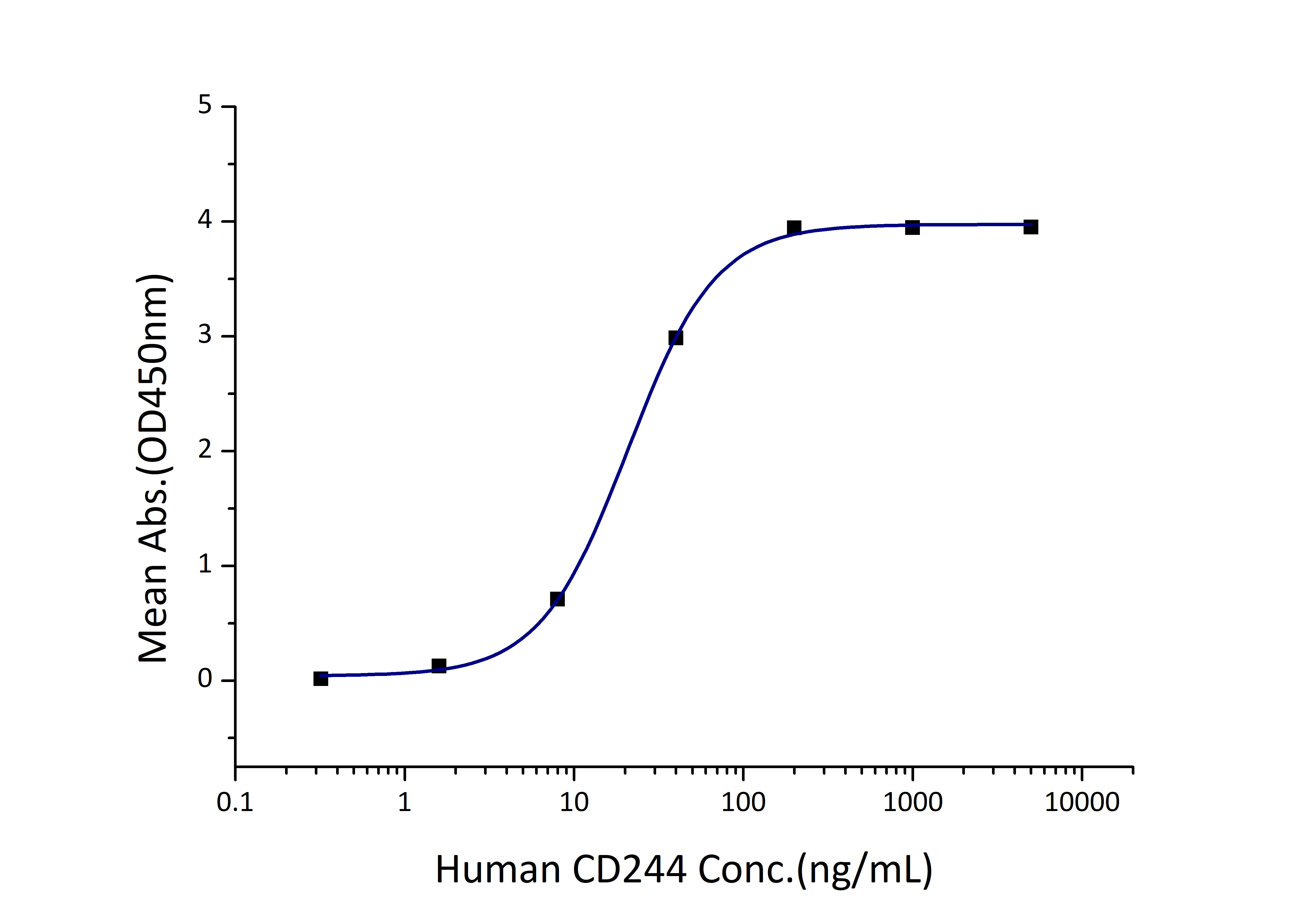Recombinant Human CD48 protein (His Tag)
种属
Human
纯度
>90 %, SDS-PAGE
标签
His Tag
生物活性
EC50: 10-41 ng/mL
验证数据展示
产品信息
| 纯度 | >90 %, SDS-PAGE |
| 内毒素 | <0.1 EU/μg protein, LAL method |
| 生物活性 |
Immobilized Human CD48 (His tag) at 2 μg/mL (100 μL/well) can bind Human CD244 (rFc tag) with a linear range of 10-41 ng/mL. |
| 来源 | HEK293-derived Human CD48 protein Gln27-Ser220 (Accession# P09326) with a His tag at the C-terminus. |
| 基因ID | 962 |
| 蛋白编号 | P09326 |
| 预测分子量 | 23.4 kDa |
| SDS-PAGE | |
| 组分 | Lyophilized from 0.22 μm filtered solution in PBS, pH 7.4. Normally 5% trehalose and 5% mannitol are added as protectants before lyophilization. |
| 复溶 | Briefly centrifuge the tube before opening. Reconstitute at 0.1-0.5 mg/mL in sterile water. |
| 储存条件 |
It is recommended that the protein be aliquoted for optimal storage. Avoid repeated freeze-thaw cycles.
|
| 运输条件 | The product is shipped at ambient temperature. Upon receipt, store it immediately at the recommended temperature. |
背景信息
CD48, also known as BLAST-1 or BCM-1, is a member of the signaling lymphocyte activation molecule (SLAM) family and is involved in immune cell adhesion and activation. It is a glycosylphosphatidylinositol (GPI) -anchored cell surface glycoprotein that interacts with various cell surface receptors, including CD244 (2B4) and CD2. CD48 plays a crucial role in regulating immune responses by mediating cell-cell interactions and signaling pathways that influence T cell activation, NK cell function, and the formation of immune synapses. Soluble CD48 (sCD48) is detected in human serum and plasma. sCD48 may serve as a potential therapeutic agent for inflammatory diseases by modulating immune cell activation and cytokine signaling.
参考文献:
1. McArdel, Shannon L et al. Clinical immunology (Orlando, Fla.) vol. 164 (2016): 10-20. 2. Smith, G M et al. Journal of clinical immunology vol. 17,6 (1997): 502-509. 3. Breuer, Oded et al. Journal of immunology research vol. (2018): 4236263.



